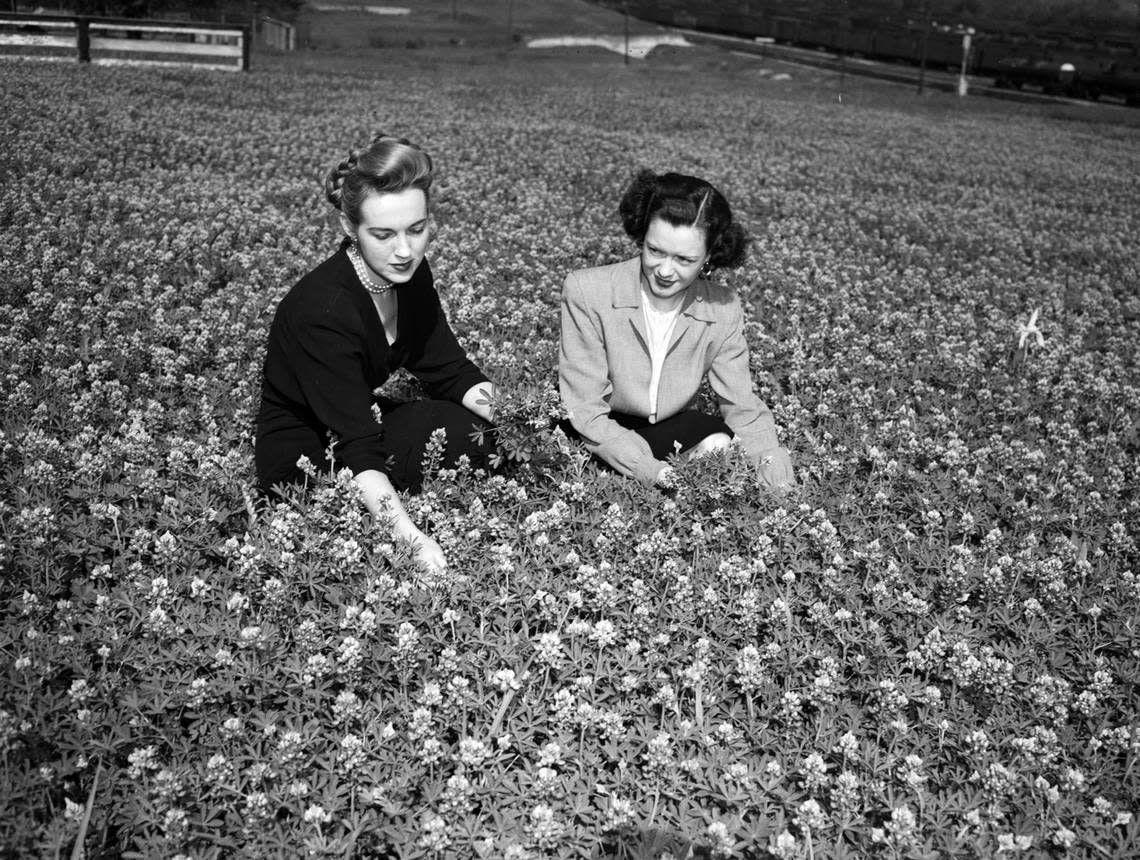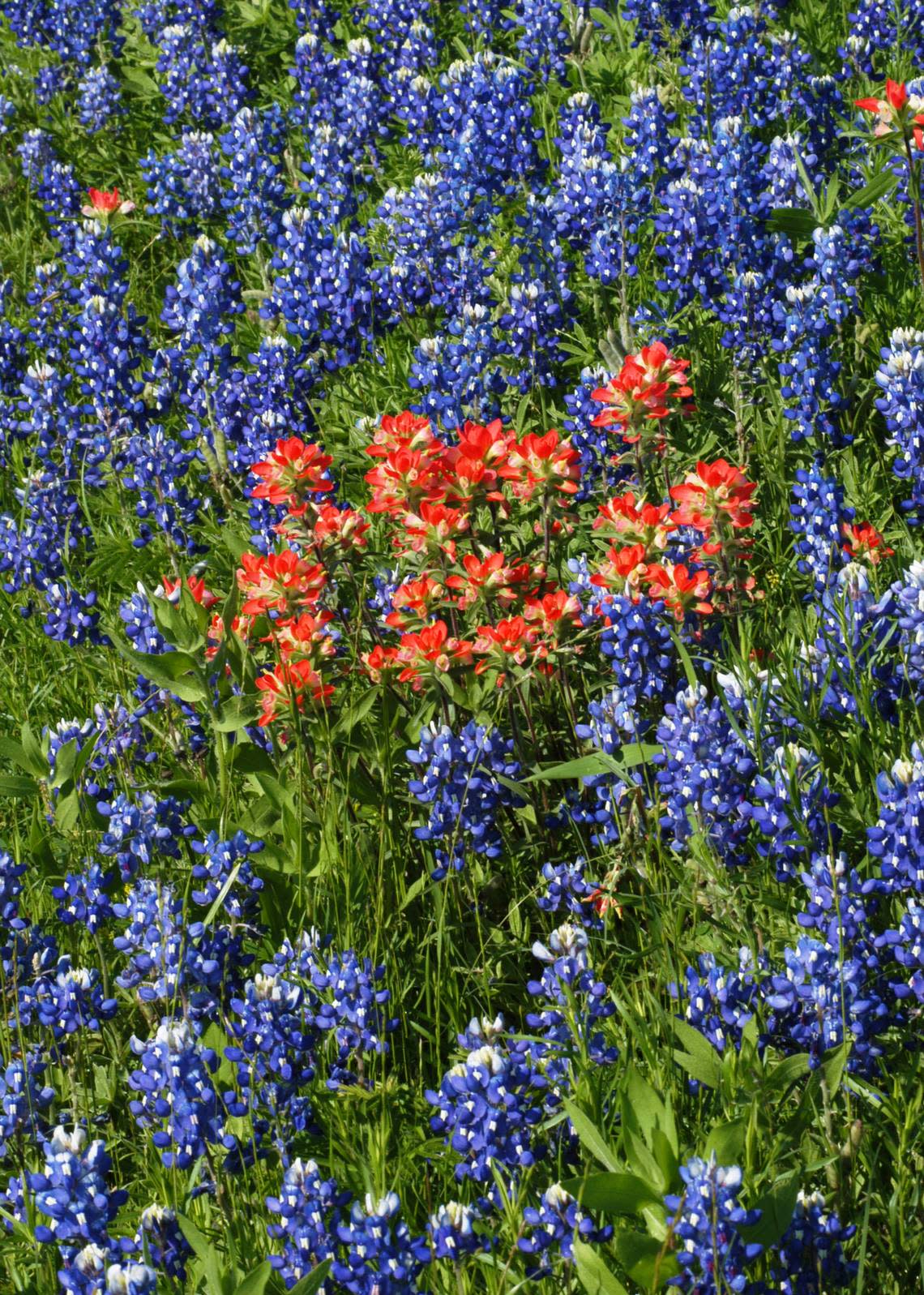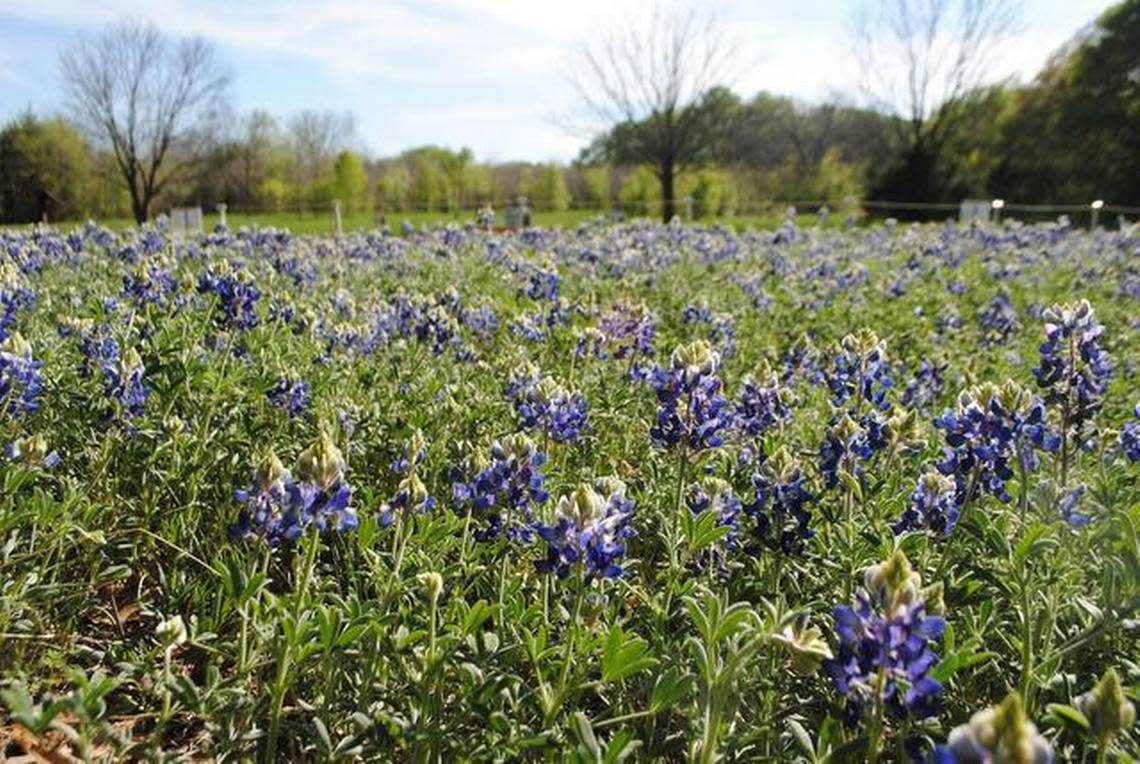Bluebonnet season is almost upon us in Texas. But is it illegal to pick them?
Texas highways will soon have a pop of color with the arrival of bluebonnet season in the spring.
Bluebonnets, named the state flower of Texas in 1901, can be seen along state highways and are a common backdrop in spring photos. Texans may have also grown up with the rumor that picking the state flower is illegal.
Here’s what to know to separate fact from fiction this bluebonnet season.
Why are bluebonnets on the side of highways?
Each year the Texas Department of Transportation sows over 30,000 pounds of wildflower seeds along highways.
The landscaping and beautification program started in 1932 when TxDOT hired landscape architect Jac Gubbels to maintain, preserve and encourage wildflowers and other native plants along Texas roadways.

Because the native species require less mowing and care, bluebonnet and wildflower season also helps reduce the cost of maintenance and labor, according to TxDOT.
Seeds are planted in the fall and take about 15 to 75 days to germinate, according to TxDOT. The seeds form roots during the winter before blooming in the fall.
When do bluebonnets bloom?
The typical bluebonnet season is from March through May, but more wildflowers can be seen at different times of the year depending on the region.
The TxDOT hardiness zones are:
Region 6: Early April – Mid August
Region 7: Late March – Mid September
Region 8: Mid March – Late October
Region 9: Early March – Early November
Tarrant County is situated in both region 7 and 8, so other native wildflower species can be found into the fall once bluebonnets are out of bloom.

Where can I find bluebonnets?
Here are some places to see bluebonnets in Texas:
Ennis Bluebonnet Trails: The Ennis Bluebonnet Trails Festival will be April 14-16, but bluebonnets can be seen April 1-30.
Fort Worth Nature Center and Refuge
Fort Worth Botanic Garden
Clark Gardens
Oliver Nature Park
Cedar Hill State Park
Bluebonnet Trail Greenbelt
Native Texas Park
Freedom Meadow
Texas bluebonnet season: When they’ll bloom, where to see them, how to grow your own

Is it legal to pick bluebonnets?
Contrary to popular rumor, there is no law that prohibits picking bluebonnets in Texas, according to the Texas Commission on Environmental Quality “Take Care of Texas” campaign.
While it’s not illegal, picking bluebonnets from certain areas can be illegal and dangerous.
You can also take photos with the bluebonnets as long as you don’t damage the flowers.
TxDOT discourages picture-taking that damages the flowers because if too many are trampled, they will die and not go to seed.
Can I plant my own bluebonnets?
You can plant bluebonnets from September to December, but early October is best.
Space out the seeds from other plants and use light, well-spaced waterings every three days for about three weeks if it doesn’t rain.
Bluebonnet seeds usually mature six to eight weeks after flowering. Mow the area once the the dead brown foliage offsets the floral color display.
